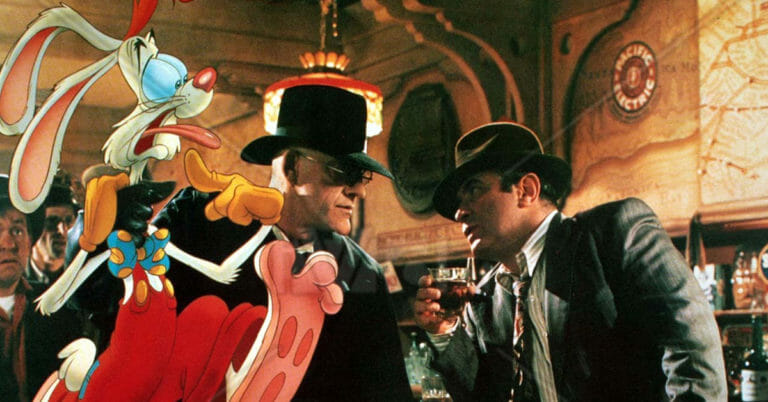By Matt van Onselen · April 10, 2018

Writing a screenplay is like playing a game of chess. You have many characters on the board, but some of them can only move in certain ways. This may seem restrictive, as you could initially desire to move the characters wherever your mind desires. But this only makes the task of structuring a screenplay that much harder. Remember how a knight or a rook can only move in specific ways? Similarly, giving your characters an “essential trait” that restricts their behavior can benefit you as a writer.
The essential trait is a directive that usually overrides everything else a character cares about. It’s something that drives them, haunts them, even controls them. How does this help you as a writer? Every time you’re wondering what a particular character’s motivations and objectives are in a scene, you can pin it to the essential trait. You can ask yourself how the current plot reverberates off the essential trait, and how it’s likely to guide your character’s behavior.
This approach makes for some marvelous villains. What more do you want than a dark nemesis who is twisted and driven solely by hatred for someone, or who seeks revenge against a group that wronged him or her? Take the epically named Judge Doom from Who Framed Roger Rabbit? His entire purpose in life revolves around eradicating “Toons”, the living and breathing cartoons that inhabit that world. That’s his essential trait. Let’s take a look at a scene where Doom is looking for information about the missing Roger Rabbit.
Notice how Doom halts everything the moment he discovers the Toon at his feet. His instinct is to immediately exterminate the little shoe, and he can’t fight the urge. This is a fabulous opportunity to develop some exposition, where we learn how Doom became a judge, and we experience “The Dip” for the first time. Towards the end of the scene, the plot returns as Doom suggests Roger Rabbit awaits the same fate as the poor little shoe when he is eventually found. Doom’s essential trait does a lot of work in this scene. And, as anyone who has seen the film knows, the irony is that Doom himself is a Toon. (It’s often helpful to play contradictory characteristics off one another.)
Let’s switch from a villain to a hero. In The Hobbit, Bilbo Baggins takes some convincing to leave his beloved Bag End. That’s where he’s lived for many years. It has all his creature comforts laid out carefully, and he wants for nothing. Bilbo’s essential trait is that he desires to retreat into his perfect hobbit hole and live as comfortably as possible until the end of time. Over the course of the movies, Bilbo makes key decisions based on this desire. In fact, one of the pivotal points in the trilogy centers around Bilbo’s essential trait.
It may seem incongruous that Bilbo is driven by his desire to be home, and yet he commits to helping a group of strangers. But this scene only serves to show how the essential trait can be amplified for dramatic effect. The key to understanding this is that although Bilbo wants to be back in Bag End, he is incredibly courageous and empathetic to others, and he realizes that, unlike him, the dwarfs do not have a home to go home to. Thus, he relinquishes his own needs in order to continue the journey. Without Bilbo’s essential trait, there would be no “Hobbit’s Tale.”
Now we can skip past the entire human race and concentrate on the essential trait of a machine. In 2001: A Space Odyssey the on-board controlling computer Hal 9000 has a mission programmed into it that drives important plot points. The essential trait is to successfully carry out the mission of the ship, no matter what the consequences. This eventually includes Hal directly disobeying the human occupants of the ship and trying to have them killed, giving the impression that he has gone “mad.” (But has he? Or is Hal just certain of what he wants?)
It may seem unfair to compare lively, emotion-filled characters to an emotionless system like Hal, but the truth is that we can look at our characters as being “programmed” like a computer when it comes to the essential trait. Yes, it’s exaggerated, but that’s the point. It gives the character purpose and gives us something as writers to use as a reference point when planning a scene. It can be amplified, renounced, or altered, but it’s there to serve us as long as we need it. Find out how your character moves, and let the game of chess commence.
 Matt van Onselen is a South African screenwriter living in Los Angeles and a graduate of the UCLA MFA Screenwriting program. He focuses on comedy writing, but will do anything for money.
Matt van Onselen is a South African screenwriter living in Los Angeles and a graduate of the UCLA MFA Screenwriting program. He focuses on comedy writing, but will do anything for money.
Photo credit: Touchstone Pictures
For all the latest from The Script Lab, be sure to follow us on Twitter, Facebook, and Instagram.